How much does a front loader bucket hold?
A front loader bucket typically holds between 0.25 to 30 cubic yards of material, varying significantly based on the machine size and application. Compact loaders used in landscaping and light construction commonly feature buckets holding 0.25 to 1.5 cubic yards. Medium-sized wheel loaders found on standard construction sites generally carry 2 to 5 cubic yards per load. Large production loaders utilized in mining and heavy industrial applications can hold an impressive 6 to 30 cubic yards in a single bucket. The material type also impacts practical capacity - lighter materials like mulch allow for larger volume loads, while dense materials like crushed stone reduce effective capacity due to weight limitations.
Small Compact Loaders

Capacity Range for Compact Models
The capacity of compact front loader bucket models typically ranges from 0.25 to 1.5 cubic yards, making these machines ideal for applications where space constraints and maneuverability take precedence over raw carrying capacity. Skid steer loaders, popular in urban construction and landscaping, commonly feature buckets in the 0.25 to 0.75 cubic yard range. These modest capacities align with the machines' compact footprint and limited hydraulic capabilities while providing sufficient volume for targeted material handling tasks.
Compact track loaders and small articulating loaders extend this capacity range slightly, typically offering buckets between 0.5 and 1.5 cubic yards. Their enhanced stability and improved traction allow for marginally larger carrying capacities while maintaining the maneuverability advantages critical in confined workspaces. These capabilities make them particularly valuable for residential construction, interior demolition, and precise landscape installations where controlled material placement is essential.
The relationship between machine weight and bucket capacity remains critically important in this class. Manufacturers carefully calibrate these specifications to ensure operational stability - a typical 5,000-pound compact loader safely handles approximately 0.5 cubic yards of dense material like soil or gravel. Attempting to utilize oversized buckets on compact machines risks compromising stability, reducing lifting capacity, and potentially causing premature component wear. This balanced approach to sizing ensures optimal performance within the machine's operational parameters.
Productivity Metrics for Small Loaders
Productivity with small front loader bucket equipment depends on understanding realistic cycle times and load factors. While large loaders prioritize maximum material moved per cycle, compact loaders emphasize cycle efficiency and precision placement. A typical compact loader completes loading cycles in 25-45 seconds under optimal conditions, potentially moving 30-60 cubic yards of material per hour depending on bucket size and operating conditions.
Load factor - the percentage of rated capacity typically achieved in operation - significantly impacts productivity calculations. Well-trained operators consistently achieve 90-95% load factors with compact equipment through proper bucket positioning and material engagement techniques. Less experienced operators or challenging material conditions may reduce this to 70-80%, substantially impacting overall productivity. Training programs focusing on proper bucket loading techniques can improve these metrics by 10-15% without equipment modifications.
Fuel efficiency considerations often favor compact loaders for appropriate applications. Their modest fuel consumption - typically 1.5 to 3 gallons per hour - creates favorable economics when material requirements align with their capacity capabilities. This efficiency advantage diminishes when projects require moving large material volumes, as the increased cycle count offsets per-cycle fuel savings. Understanding these productivity trade-offs helps project managers select appropriate equipment for specific material handling requirements, balancing cycle efficiency against total volume requirements.
Larger, Heavy-Duty Loaders

Capacity Ranges for Production Loaders
Large production loaders utilize massive front loader bucket capacities ranging from 6 to 30 cubic yards to maximize material handling efficiency in high-volume applications. These imposing machines, with operating weights often exceeding 200,000 pounds, represent the pinnacle of earth-moving efficiency. Their substantial buckets can move 15-25 tons of material in a single pass, dramatically reducing cycle requirements for major excavation, mining, or aggregate processing operations.
Capacity scaling follows predictable patterns across the production loader spectrum. Mid-range models (operating weight 70,000-120,000 pounds) typically feature buckets in the 6-12 cubic yard range, suitable for quarry operations and large-scale construction. The largest production loaders (operating weight 200,000+ pounds) utilized in mining applications may handle 20-30 cubic yards per cycle, enabling them to load haul trucks efficiently with minimal passes. This capacity optimization significantly reduces loading time for transport vehicles, enhancing overall operational workflow.
Specialized bucket designs further expand effective capacity for specific materials. Coal buckets feature expanded volumes with reinforced cutting edges, potentially increasing volume by 15-25% compared to standard configurations. Similarly, woodchip and biomass handling buckets maximize volume while minimizing weight through strategic reinforcement placement. These purpose-built designs optimize the loader's capabilities for specific material densities, balancing maximum volume against structural requirements and machine limitations.
Material Density Impact on Large Equipment
Material density considerations become particularly critical with large front loader bucket equipment where the difference between operating within specifications and dangerous overloading can be subtle. Dense materials like wet shot rock (3,000+ pounds per cubic yard) may require operating at 70-80% of rated bucket capacity to remain within the machine's structural and hydraulic limitations. Conversely, lighter materials like coal (1,300-1,500 pounds per cubic yard) may allow full utilization of the bucket's volumetric capacity without approaching weight constraints.
Manufacturers address these density variations through application-specific bucket options. High-density material buckets feature additional reinforcement, wear protection, and possibly reduced volume to handle abrasive, heavy materials safely. Light material handling buckets maximize volume while strategically reducing weight through selective reinforcement patterns. This specialization optimizes the machine's effective capacity for specific material types, enhancing productivity without compromising structural integrity.
Operational Efficiency at Scale
Large front loader bucket operations demand meticulous attention to loading zone setup and maintenance. The substantial material volumes moved create significant ground stress, potentially leading to uneven surfaces that compromise loader stability and reduce effective bucket filling. Regular loading zone maintenance - including proper drainage, surface grading, and appropriate material compaction - can improve bucket fill factors by 5-10% compared to neglected work areas.
Technological advancements significantly enhance large loader productivity. Automated bucket control systems maintain optimal attack angles throughout the loading cycle, improving fill rates while reducing operator fatigue. Some advanced systems integrate machine learning algorithms that adjust bucket positioning based on material characteristics and pile configurations. These sophisticated controls can improve productivity by 8-15% compared to manual operation while reducing fuel consumption through optimized engine and hydraulic load management.
Fleet integration strategies further maximize large loader efficiency. Properly matched loader-to-truck ratios ensure continuous material flow without excessive waiting periods. Sophisticated fleet management systems coordinate loader and truck movements, optimizing cycle times and minimizing unproductive positioning maneuvers. When properly implemented, these integrated approaches can improve overall fleet productivity by 12-20% compared to uncoordinated operations, substantially reducing cost-per-ton metrics for high-volume material handling scenarios.
Wheel Loaders

Mid-Size Wheel Loader Capacities
Mid-size wheel loaders represent the most versatile and widely utilized category of material handling equipment, featuring front loader bucket capacities typically ranging from 2 to 5 cubic yards. These machines balance substantial carrying capacity with reasonable mobility, making them ideal for diverse construction applications including road building, commercial site preparation, and material yard operations. Their popularity stems from this operational flexibility coupled with favorable economics across various project scales.
Within this category, meaningful capacity subdivisions exist. Utility wheel loaders (operating weight 20,000-30,000 pounds) generally offer buckets in the 2-3 cubic yard range, providing an excellent balance of maneuverability and capacity for general construction applications. General purpose wheel loaders (operating weight 30,000-45,000 pounds) extend this range to 3-4 cubic yards, handling heavier materials and higher production requirements. Production-oriented mid-size loaders (operating weight 45,000-60,000 pounds) feature buckets approaching 5 cubic yards, suitable for aggregate processing and medium-scale quarry operations.
Attachment versatility significantly enhances mid-size loader functionality. Multi-purpose buckets with integrated clamp systems maintain reasonable capacity (typically 80-90% of standard buckets) while adding material clamping capabilities. Side-dump buckets facilitate precise material placement while maintaining capacities comparable to standard configurations. These specialized attachments expand the machine's application range without significantly compromising core carrying capabilities, making mid-size loaders extraordinarily adaptable across diverse job requirements.
Bucket Configuration Options
Front loader bucket configuration options substantially impact effective capacity and operational characteristics. General purpose buckets provide balanced performance with moderate capacity, typically featuring flat floors and modest side profiles that facilitate good material penetration while maintaining reasonable material retention. These versatile configurations handle most common materials effectively, making them the predominant choice for varied applications.
Specialized configurations optimize performance for specific materials and applications. Rock buckets feature reinforced cutting edges, additional wear protection, and modified profiles that improve penetration in compacted or loosely blasted materials. Their design typically sacrifices some volumetric capacity (5-10% reduction) in exchange for enhanced durability and material handling capabilities in challenging conditions. Conversely, light material buckets maximize volume through extended side sheets and taller profiles, potentially increasing capacity by 15-25% for handling low-density materials like mulch, snow, or woodchips.
Wear protection systems significantly impact long-term capacity retention. Replaceable wear components - including bolt-on cutting edges, heel plates, and side cutters - protect the bucket's structural integrity from progressive degradation. Advanced wear packages incorporating high-hardness overlay materials or replaceable wear inserts extend service intervals while maintaining consistent capacity throughout the bucket's operational life. These protective systems represent crucial investments for maintaining productivity in abrasive material applications where unprotected buckets might lose 5-10% of effective capacity annually through wear.
FAQ
1. How do bucket capacities vary by manufacturer?
While industry standards provide general front loader bucket capacity classifications, meaningful variations exist between manufacturers. Different design philosophies result in capacity differences of 5-10% between similarly classed machines.
2 . How do I calculate material volume for my project?
Accurate project planning requires converting front loader bucket capacity into practical material estimates.
3 . What factors affect actual bucket fill rates?
Several factors influence actual front loader bucket fill rates beyond nominal capacity ratings. Material characteristics significantly impact results - well-blasted rock typically achieves 80-90% fill factors, while cohesive materials like clay may reach 95-100%. Operator technique plays a crucial role, with skilled operators consistently achieving 10-15% higher fill rates through proper bucket positioning and pile approach strategies. Machine factors including available hydraulic power, traction capabilities, and bucket geometry also influence results. Work environment conditions - particularly underfoot stability and pile configuration - can impact fill rates by 5-10%. Modern loader systems often incorporate automated assistance features like return-to-dig functions and bucket position monitoring that help operators consistently achieve optimal fill rates regardless of experience level. Understanding these variables helps managers develop realistic productivity expectations for specific operational contexts.
Bucket Loader For Sale

Are you looking to boost your loading efficiency? Look no further than Tiannuo's front loader bucket. Designed with precision, our bucket, such as the Shante ZL50 model, features a width of 2.24 m, a bottom width of 0.5969 m, and a depth of 0.025 m. It also has a rated load of 5000 kg, an unloading height of 3090 mm, and a maximum breakout force of 170 kN. Contact us at arm@stnd-machinery.com, rich@stnd-machinery.com, or tn@stnd-machinery.com to explore how our bucket can enhance your business.
References
Association of Equipment Manufacturers (2023). "Standard Measurement Protocol for Loader Attachments and Capacities."
Journal of Construction Engineering and Management (2024). "Analysis of Loader Productivity Factors in Various Material Handling Applications."
International Society of Heavy Equipment Technicians (2023). "Comprehensive Guide to Equipment Capacity Optimization."
Heavy Equipment Quarterly Review (2024). "Comparative Analysis of Loader Bucket Designs and Performance Metrics."
Construction Materials Processing Institute (2023). "Material Density Impact on Equipment Selection and Utilization."
Engineering Research Council (2024). "Advanced Measurement Standards for Earth-Moving Equipment Capacities."
About Author: Arm
Arm is a leading expert in the field of specialized construction and railway maintenance equipment, working at Tiannuo Company.
YOU MAY LIKE
 VIEW MOREExcavator Sleeper Clamp
VIEW MOREExcavator Sleeper Clamp VIEW MORERail-Road Ballast Undercutter Excavator
VIEW MORERail-Road Ballast Undercutter Excavator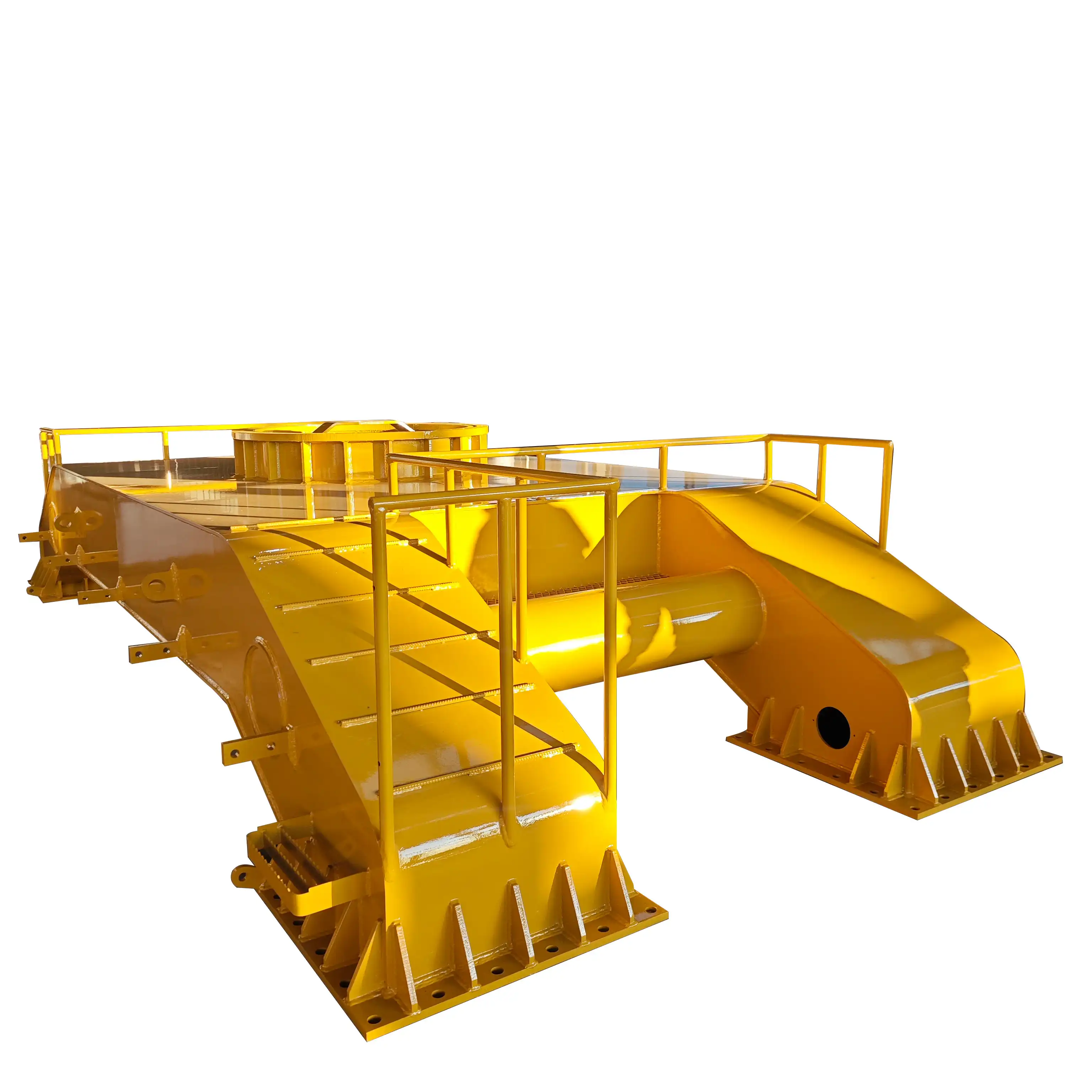 VIEW MOREStaddle excavator
VIEW MOREStaddle excavator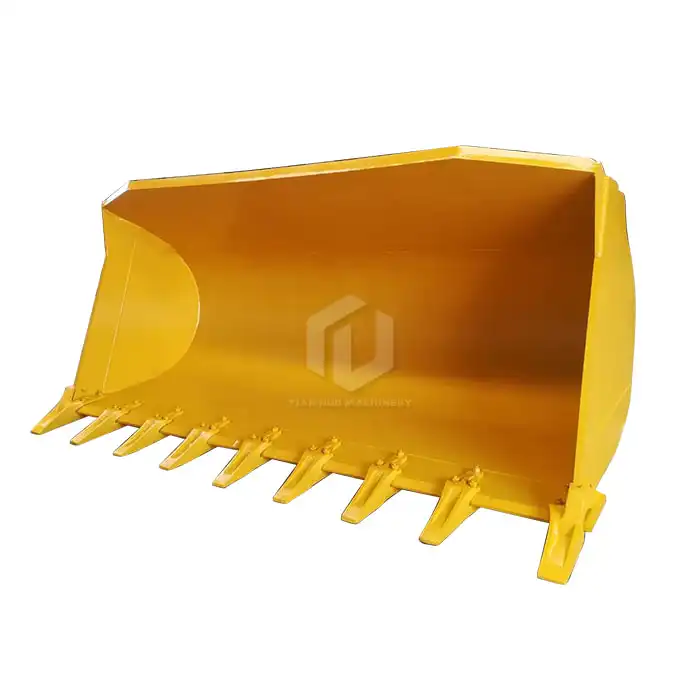 VIEW MOREFront Loader Bucket
VIEW MOREFront Loader Bucket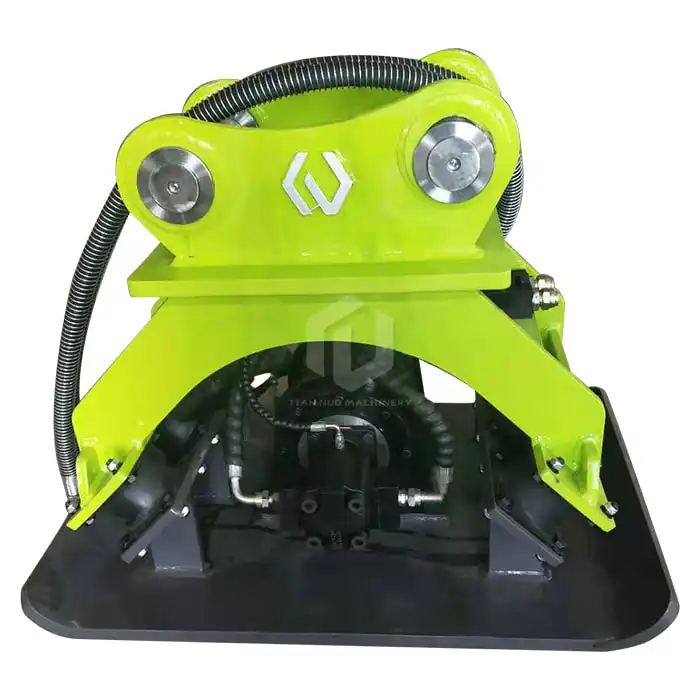 VIEW MOREExcavator Vibratory Compactor
VIEW MOREExcavator Vibratory Compactor VIEW MOREExcavator High Reach Demolition Long Boom And Arm
VIEW MOREExcavator High Reach Demolition Long Boom And Arm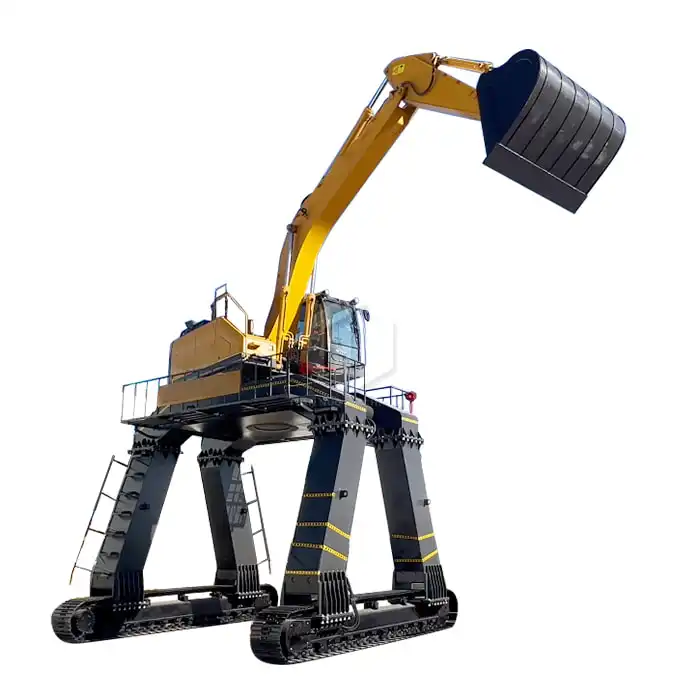 VIEW MOREUnloading Train Excavator Long Legs
VIEW MOREUnloading Train Excavator Long Legs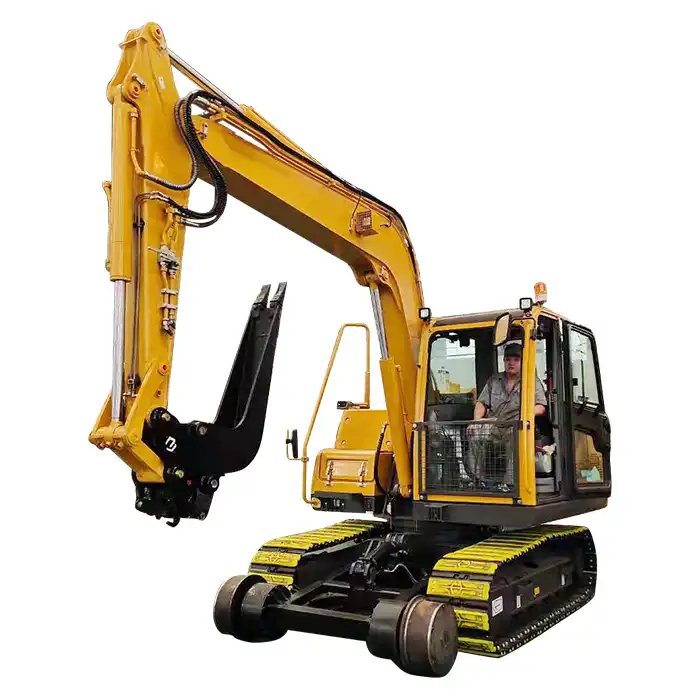 VIEW MORERailway Excavator Cleaning Bucket
VIEW MORERailway Excavator Cleaning Bucket

